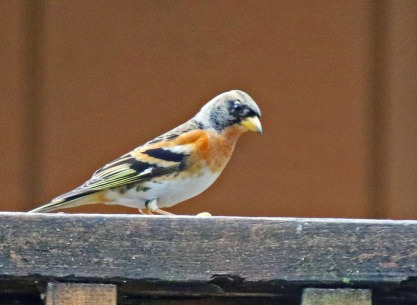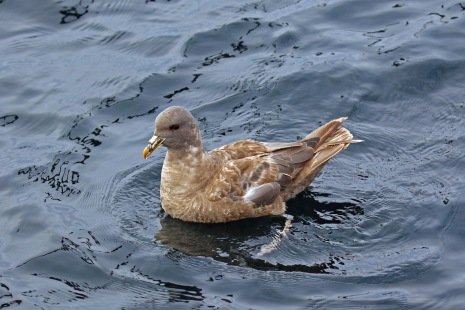By the time I first visited Seattle in the summer of 1972, I was just beginning my journey to become a “birder”. I had begun to contract that disease – or more positively stated, develop that passion – while in law school spending far too much time at Palo Alto Baylands and Coyote Hills Regional Park. I was not so much into listing at that time and of course there was no “Ebird” so record entry and record retrieval was a totally different matter. But I did keep some notes and records and eventually many of them have become data points in Ebird and thus open to review and catalysts for memories of the past.
Yesterday some work on another birding project included an examination of my birding history in Washington which gave birth to this post – looking back at rarities of the past. Some have been seen again, but many not. No digital cameras back then, so no photos and how I regret that. My first Ebird entry for Washington was from a trip to Sunrise at Mount Rainier on July 27, 1972 – a place I revisited two days ago (September 21) in an unsuccessful attempt to find a Boreal Owl. While there I made the comment to my companions that I remembered that Ptarmigan sure seemed easier to find in the “good old days” and checking that out was one reason that I looked back at my old birding records in Washington.
The checklist from that first Rainier visit did include White Tailed Ptarmigan. It was pretty clear that while I identified Sunrise as the location, other spots along the way were actually involved and my record keeping then was not very precise. All told I reported 34 species and of those 27 were “life birds” – the joy of birding new areas. Among those “lifers” were Sooty Grouse, Gray Crowned Rosy Finch, Clark’s Nutcracker, Gray Jay, Townsend’s Solitaire, Hermit Warbler, Red and White Winged Crossbills, Black Swift and Mountain Chickadee. Some of those are not so rare but all were pretty exciting at the time and many would still be considered quite nice today. Again no photos, but since one rule for blog writing is to not go too long without including some photos, here are two from the failed Owl Prowl on September 21st.
Gray Jay – Sunrise, Mt. Rainier

Clark’s Nutcracker – Sunrise, Mt. Rainier

The nostalgia seeing that first Washington checklist led me to wonder about other early birding experiences in Washington. In those early days there was no Ebird and no Tweeters so news about special birds came by word of mouth and a single hotline or “Rare Bird Alert”. Somehow it worked and while I was actually working and starting a new life in a new place, I found time to go on at least a few chases and looking back at the Ebird entries made many years later, I found a lot of very rare birds including many I have not seen again. The remainder of this post describes some of them – and I sure wish some would return and I could enjoy them again, this time with a camera at hand.
Arctic Loon – Port Gamble – October 22, 1973. This is the only Arctic Loon I have seen. There have been only a couple more recent records in Washington. I cannot recall any details of this observation other than I believe it may have been on Seattle Audubon RBA at the time. I had hoped to see one on my Alaska trip in June this year but did not. Photo from the internet.

Scripp’s Murrelet – Westport Pelagic – September 8, 1974 My first observation was on my first pelagic trip – who knew it would be almost 30 years before finding one again – a pair seen on September 7, 2013 and then another on October 19, 2013. Not surprisingly that first trip included a lot of other life birds including the “Skua Slam” , Buller’s (then New Zealand) Shearwater, Tufted Puffin, Fork Tailed and Leach’s Storm Petrels, Black Footed Albatross (my first albatross), Sabine’s Gull and Arctic Tern.

McKay’s Bunting – Ocean Shores – February 5, 1979 – beautiful bird that created a lot of excitement. There have been other McKay’s Buntings at various spots at Ocean Shores. I chased one a day too late at Damon Point in February 2012. The photo is by Knut Hansen of that bird.

Brambling – Lake Sammamish – January 20, 1982 My first observation was at a stakeout near Lake Sammamish. Since that time I have seen three more Bramblings in Washington. The next was in Birch Bay, then one in Neah Bay during the same crazy week that had the Eurasian Hobby among a number of other good birds, and then finally one last year coming to a home in Issaquah. The photos are from the three more recent sightings.



White Wagtail – Fort Casey SP – January 21, 1984 This rarity was seen by many on Whidbey Island in 1984. Another was found at/near Point no Point in 1993 and another possible one in the same area in 2007. I have expected additional visits but my only other observations have been elsewhere. The first was on an extraordinary day of birding at the Mai Po Nature Reserve outside Hong Kong on Christmas Day 1979, the next in Corbett National Park in India on January 11, 2011 and most recently in Nome Alaska on June 5, 2016. The photo is of the Nome bird.

Little Gull – Everett Sewage Ponds – September 23, 1984 The photo is from a later sighting on October 7, 2013 from Point No Point where it was seen at distance from shore in a massive group of Bonaparte’s Gulls. My first observation of this bird was from the South Jetty of the Yaquina River in Oregon on September 8, 1979. A pretty poor photo but I was thrilled to get it.

Steller’s Eider – Point Wilson/Fort Worden – November 23, 1986. This is a photo from the internet. I believe this is the only Washington record – certainly the only Ebird entry. It ranks right up there with Smew as what I feel are the most beautiful ducks – even ahead of the showier Wood Duck and Hooded Merganser.

Rustic Bunting – Kent Ponds – December 19, 1986 – This rarity continued into January 1987 and then repeated its performance in 1988/1989. I had seen one in Wajima, Japan in December 1983, my only other record. Photo is from the internet.

My Washington birding was very active from when I first arrived until the birth of my first child in 1984. I had moved to Oregon for a few years and birded there but even then more in Washington. I continued a few chases for the next couple of years after her birth and then became absorbed in activities involving that daughter and the son that followed. Recreational time was devoted to a new found passion – fly-fishing. As they moved on to high school and then graduated and went off to college, my birding activity was more international with fun trips to Australia, Brazil and Kenya. Slowly, however, the interest in Washington returned and from 2010 on that has been a big, enjoyable and rewarding part of my life.
During the years I did not bird in Washington, I missed a lot of great birds, some of which I have been fortunate to see later – some not. Among those missed and not seen later are White Ibis (Raymond – January 2001), Dotterel (Ocean Shores October and November 1999), Baikal Teal (Kent Ponds April 2005), Garganey (Wenzel Slough April 2005), Fork Tailed Flycatcher (Pacific County – September 1995) and the one bird that remains on the very top of my “birding bucket list” – Smew. One was seen two years in a row near Stevenson, Washington. I will leave the minute I hear of one being seen anywhere in Washington, anytime. In fact it may be the one bird that I will leave for immediately if I hear of one anywhere in the U.S. – if it is a male – as I think it is the most beautiful of all the birds. Just wish the photo below, which will conclude this post, were mine.
Smew – the Very Top of My Birding Bucket List – photo from Internet




























































